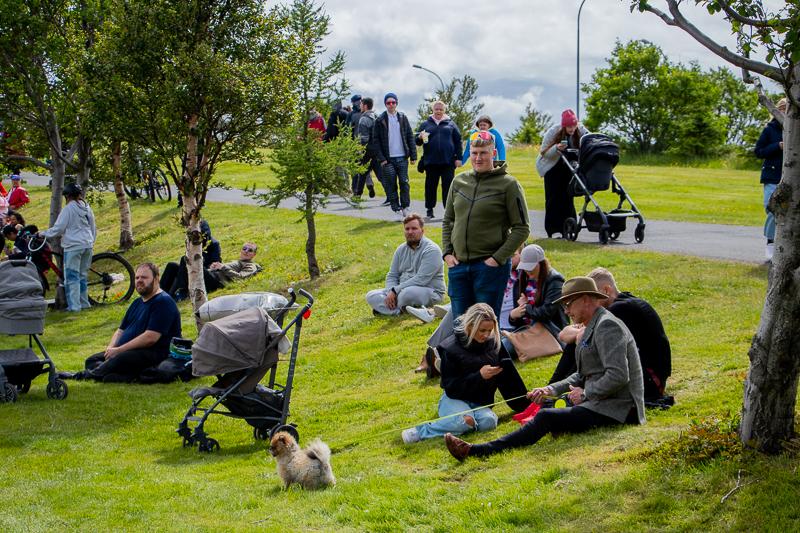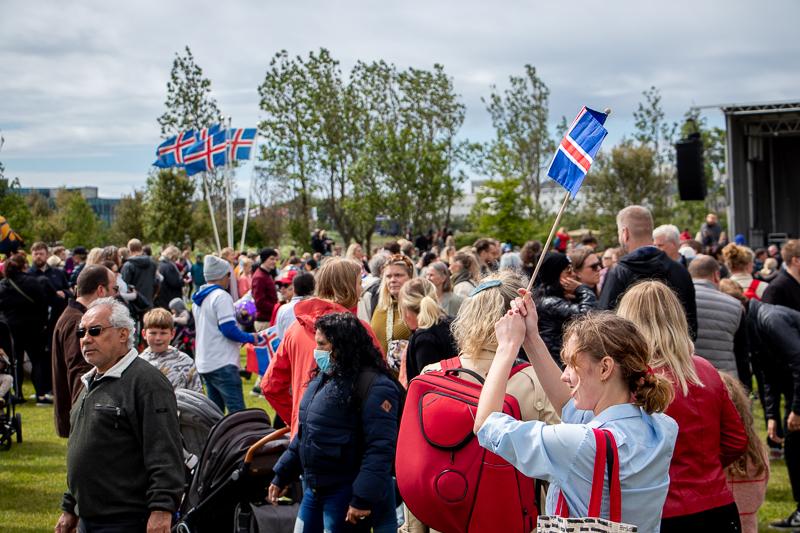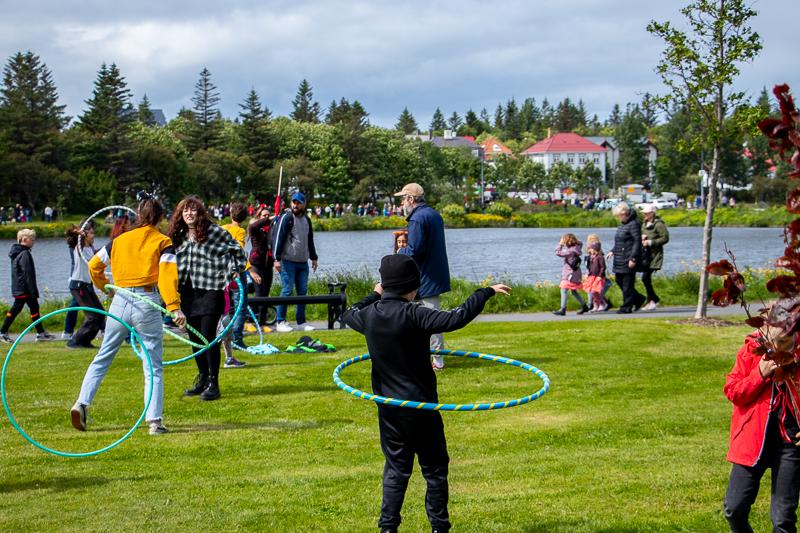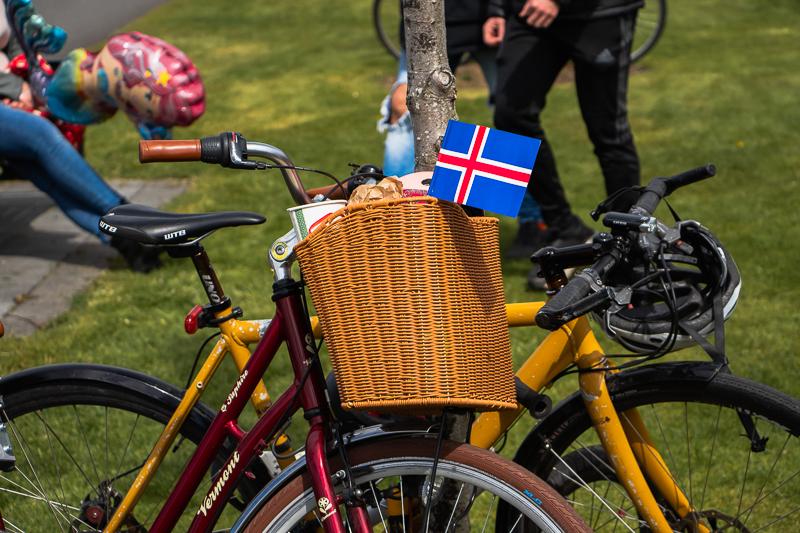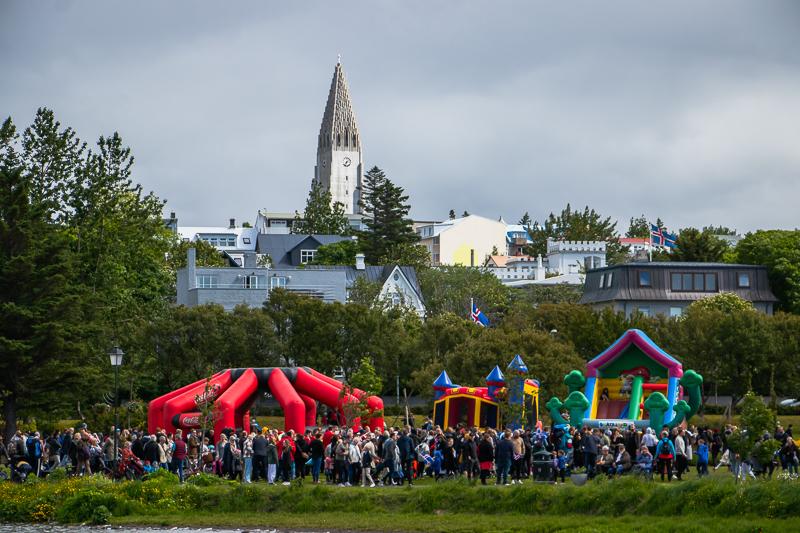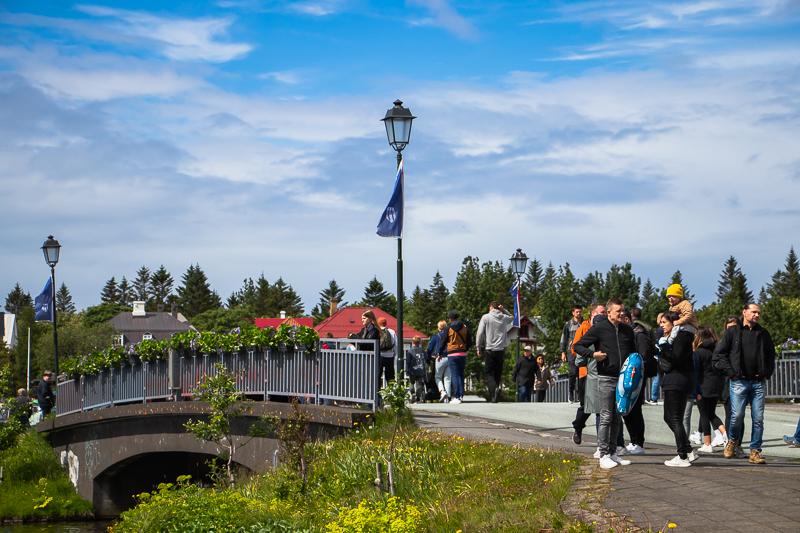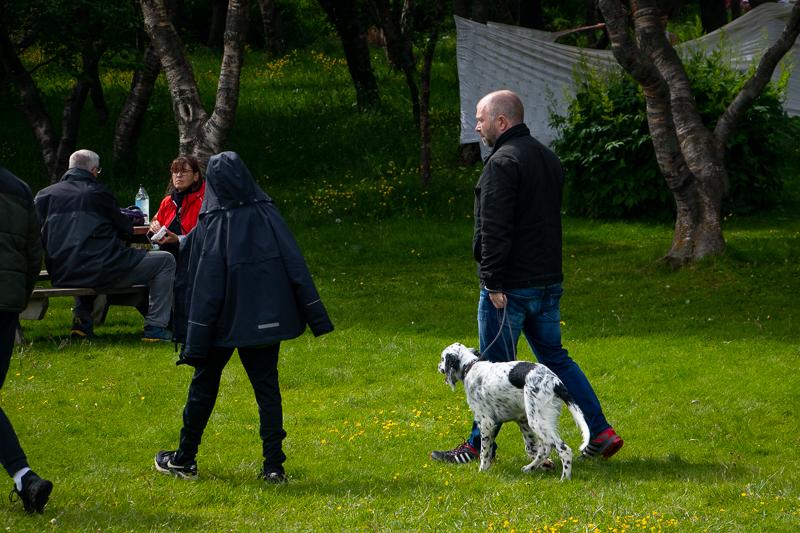Hljómskálagarðurinn, Tjörnin, and Vatnsmýrin
Outdoor recreation areas
Hljómskálagarður
101 Reykjavík

About the area
Few open spaces in Reykjavík are as close to residents' hearts as Tjörnin and its surroundings, Hljómskálagarðurinn and Vatnsmýrin. These areas uniquely blend nature and daily life in the city center.
Urban development in Reykjavík began at Tjörnin's north end in the 18th century. Since then, Tjörnin has been central to Reykjavík's growth and an important area for recreation. It's rare for a capital city mostly surrounded by sea to have such a large freshwater pond in its center. Tjörnin's rich biota, especially its diverse bird life, greatly attracts City residents. Efforts focus on protecting bird welfare, including wetland preservation in Vatnsmýri south of Hringbraut. A bird sanctuary there is run by Reykjavík City in partnership with the University of Iceland and the Nordic House. Hljómskálagarðurinn on the south by Suðurtjörn is one of Reykjavík's larger public parks. It's named after Hljómskálinn, built in 1923, long used for brass band practice. Several smaller public parks are near Tjörnin, including Hallargarðurinn, Mæðragarðurinn, and Austurvöllur. Many notable buildings stand by Tjörnin and nearby streets, such as Reykjavík City Hall, the Prime Minister's residence on Tjarnargata, Iðnó, Fríkirkjan, the National Gallery of Iceland, the Women’s Gymnasium, and Hljómskálinn.
Basic information
Size: Norðurtjörn (6.5 ha), Suðurtjörn (2.2 ha), Vatnsmýri Sanctuary (7 ha).
Age: Hljómskálagarður (1923). Vatnsmýri Sanctuary (1984).
Transportation:
- Parking on Fríkirkjuvegur and Tjarnargata (paid parking weekdays 10am-6pm, Saturdays 10am-4pm).
- Public bus routes: 1-3-6-11-12-13-14. Stops: Fríkirkjuvegur - Ráðhúsið - MR - Háskóli Íslands.
It includes: Gardening - Birdlife - Artwork - Benches - Picnic tables - Playground - Architecture - Historical sites - Festivities - Notable buildings.
Tjörnin's environment
Reykjavík's Tjörnin is an old sea lagoon that closed off over 1,200 years ago, gradually becoming a freshwater pond due to groundwater flows from Vatnsmýri. Tjörnin drains through Lækurinn, flowing north from its northeast corner to the sea. It's now completely underground. Tjörnin is divided into two ponds, Norðurtjörn and Suðurtjörn, with flow between them. A small artificial pond, Þorfinnstjörn, is south of Suðurtjörn. Hljómskálagarðurinn surrounds both Suðurtjörn and Þorfinnstjörn, extending east to Njarðargata. The two larger ponds freeze in cold weather, but hot water keeps an open area at Lækurinn's outlet near Iðnó. Tjörnin and Vatnsmýrin were added to the Nature Conservation Register in 1981, and a bird sanctuary was established in 1984 in northern Vatnsmýri. The sanctuary is now surrounded by ditches with walking paths open to visitors outside nesting season. The sanctuary hosts 83 vascular plant species, including vegetation typical of Icelandic wetlands such as common sedge, yellow sedge, marsh cinquefoil, mare's-tail, and marsh marigold. Various small animals inhabit the pond, including water fleas, copepods, oligochaetes, midge larvae, pond snails, and three-spined sticklebacks.
Bird life
Birds at Tjörnin have been protected since 1919, before which the area was popular with hunters. Protection greatly increased bird density and diversity, making the rich bird life a strong feature of the city center and a point of civic pride. Along with protection, a boating ban was implemented, allowing birds to nest undisturbed on Tjörnin's islands, which remain the area's most important nesting sites. Tjörnin's characteristic species have long been ducks, geese, and swans. Swans were first brought to Tjörnin in summer 1920 and nested there briefly, but today Tjörnin is primarily used by wintering birds and non-breeding birds. Greylag geese are regular winter visitors, with a few pairs nesting annually in Vatnsmýri. Five duck species regularly nest at Tjörnin. Mallards are the most common and visible. In the latter half of the 20th century, nesting experiments were conducted with nine other duck species, but only four - scaup, gadwall, tufted duck, and common eider - have nested annually since. Wigeon, teal, and red-breasted merganser are frequent visitors to Tjörnin. Recently, gulls have become very noticeable at Tjörnin, attracted by bread given to ducks by passersby. Lesser black-backed gulls have increased significantly, while black-headed gulls nest on islands and are prominent in summer. Common snipe nest in the sanctuary, as do redshank and oystercatcher, with ringed plover nesting on its edges. Various other waders seen there in summer nest near Reykjavík Airport, such as golden plover, black-tailed godwit, and whimbrel. Redpolls, white wagtails, redwings, common starlings, meadow pipits, and other passerines nest in Hljómskálagarðurinn and the sanctuary. Domestic pigeons were once common at Tjörnin's north end but have decreased in recent years.
History
- Urban development in Reykjavík began at Tjörnin's north end, site of the Reykjavík settlement farm. Along Lækurinn, flowing north from Tjörnin, stood the farms Stöðlakot and Skálholtskot, with other crofts west of Tjörnin. With the New Enterprises (I. Innréttingarnar) in the 1750s, a small factory village arose at Tjörnin's northwest. The urban area expanded, surrounding Tjörnin's north side. The Cathedral was consecrated in 1797, standing very close to Tjörnin's bank, with the Parliament building rising beside it in 1881.
- Tjörnin was filled in from the north in the late 19th century, creating space for development south of the Cathedral where Vonarstræti is now. Lækurinn's banks were built up, channeling it into a straight conduit.
- Development along Tjörnin's east side mostly arose in the early 20th century. This included Fríkirkjan, built in 1903, and Thor Jensen's house and the Women’s Gymnasium in 1908-9. At the same time, the row of houses on Tjarnargata west of Tjörnin was built.
- The bridge over Tjörnin (Skothúsvegur) was first built in 1920 for pedestrians but was enlarged and opened to car traffic during World War II. Þorfinnstjörn was created in 1927 with a fairly large island intended for birds. Two ponds were also made in Vatnsmýri south of Hringbraut in the 1960s, Vatnsmýrartjörn and Hústjörn. These are now within the bird sanctuary.
- Tjörnin was long used for ice harvesting, with a large ice house built at Tjörnin's east end in 1916, now housing the National Gallery of Iceland. Tjörnin has been a popular skating rink in winter since ancient times, with the Reykjavík Skating Club founded in 1892.
- Hljómskálagarðurinn was created on landfill after draining and filling a marsh at Tjörnin's south end. Tree planting began in the park in 1914; the largest grove today is the birch grove east of Bjarkargata. Hljómskálinn was built in 1923. The park gradually expanded southward with increased gardening and tree planting.
- Vatnsmýri was formerly a large wetland area used by Reykjavík residents for peat cutting. The marsh was mostly drained and cultivated in the early 20th century, with Reykjavík Airport built there in the 1940s.
- In 1984, a special sanctuary was established in northern Vatnsmýri (where Vatnsmýrartjörn and Húsatjörn are), which along with Tjörnin was placed under City protection and later neighborhood preservation. In autumn 1996, ditches were dug around the sanctuary and walking paths built within it, open outside nesting season.
- Reykjavík City Hall stands at Tjörnin's northeast end, dedicated in 1992 but first planned in 1927.
References
- Guðjón Friðriksson. 1992. Tjörnin and daily life. Í Ólafur Karl Nielsen (editor). 1992. Tjörnin: History and biota. Reykjavík City. Jóhann Pálsson. 2003.
- Nature Conservation Register, 3rd edition. 1981. Nature Conservation Council.
- Ólafur Karl Nielsen. 1992. History of bird life at Tjörnin. Í Ólafur Karl Nielsen (editor). 1992. Tjörnin: History and biota. Reykjavík City.
- Ólafur Karl Nielsen and Jóhann Óli Hilmarsson. 2010-2012. Tjörnin's bird life (annual status reports).
Photo of swans on Tjörnin: Björn Ingvarsson.
